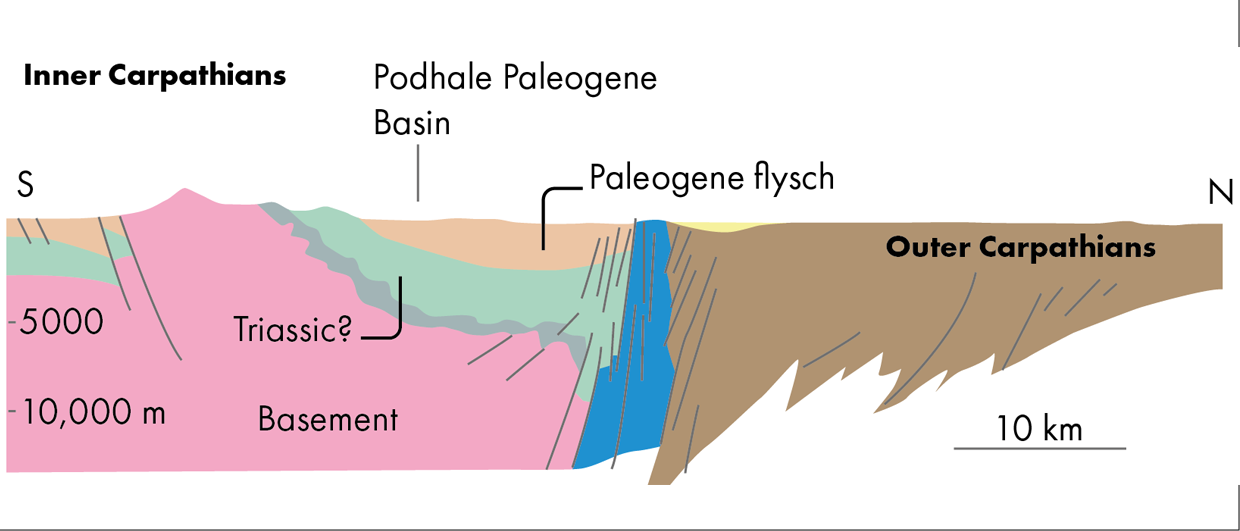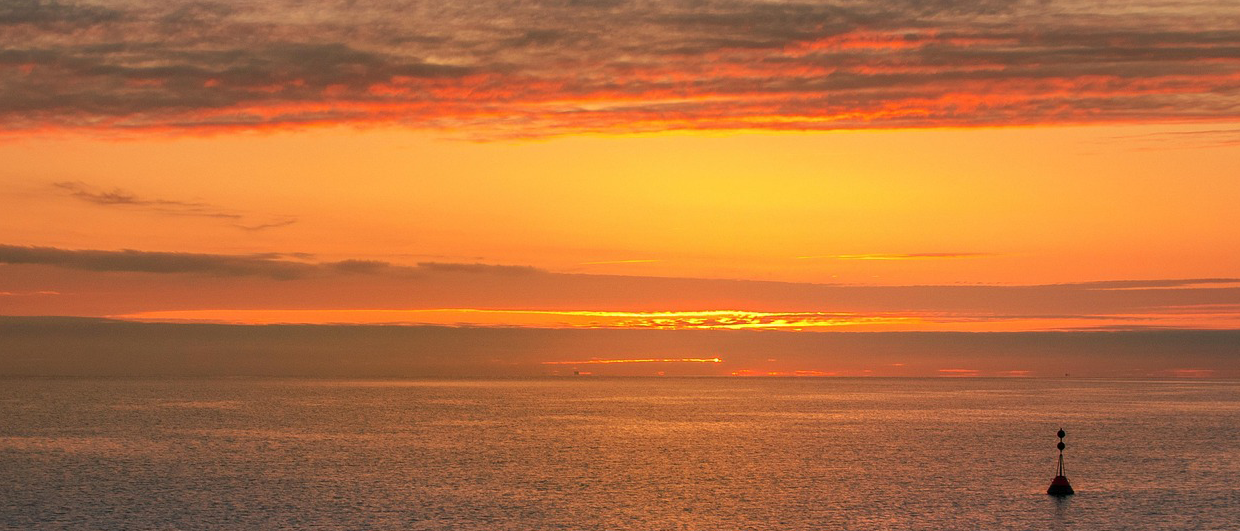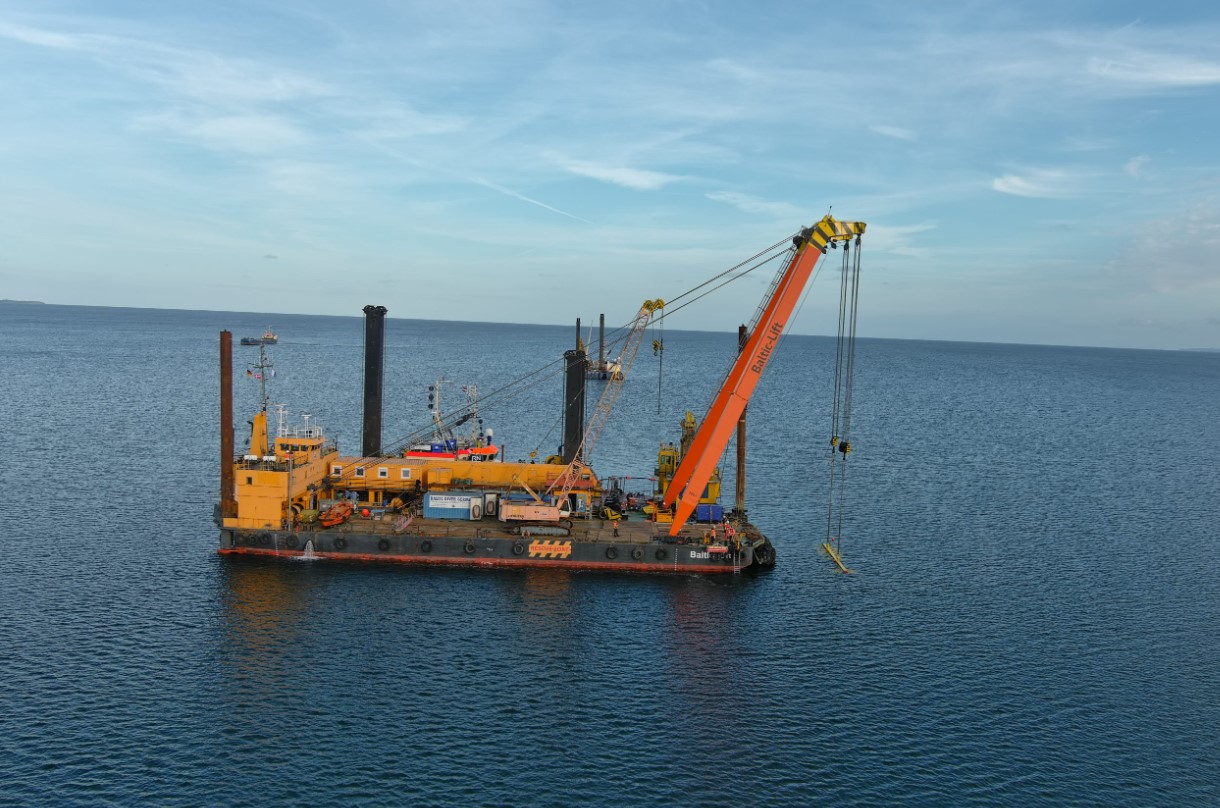The website ThinkGeoenergy reported in February that preparations were ongoing for drilling a geothermal well in the south of Poland, with a potential terminal depth of 7 km. Reaching this depth would be a global record for a geothermal well, according to the website. What is the geological setting in which this well is being drilled? And how much is known of the geology at these depths?
Foredeep
When looking at the cross-section above, it is clear that the Podhale Basin, in which the well is being drilled, is a foredeep of the Carpathian Mountains in the south of Poland. An overview paper, published by Wiesław Bujakowski and co-authors in 2020 in Geothermal Energy, deals with geothermal boreholes drilled in Poland and describes the Podhale Basin as a prospective region for geothermal energy production.
The authors also write that the most important geothermal aquifer constitutes Triassic limestones and dolomites, which tend to have low porosity. For that reason, flow is primarily dependent on natural fractures and faults.

Twice as deep
By 2020, a total of 15 geothermal wells had been drilled in the Podhale Basin, with the maximum depth reached being 3,600 m at the time. The authors further mention that the Triassic attains a thickness of around 700 m in the central part of the basin, which means that the succession marked as “Triassic?” in the cross-section must also contain younger or older strata.
Regardless, drilling of a well twice as deep as the deepest well in the basin is not a trivial thing. Even though the location of the well has not been projected onto the cross-section, it is likely that it is targeting a more central location within the Podhale Basin where the Paleogene overburden reaches maximum thickness.
“The Podhale basin already hosts the largest geothermal heating plant in Poland.”
High pressure
The authors of the paper also note that most wells drilled in the basin to date do not need any pumps because of high reservoir pressures (up to 27 bar).
Wellhead temperature of produced water in the basin varies from 20°C in the southern part of the system up to 90 °C in the central and western part. However, the authors note that temperatures of up to 120°C were recorded in deeper parts of the basin at a depth of 4,800 m, even though geothermal energy production never took place from that particular well.
The Podhale basin hosts the largest geothermal heating plant in Poland (40.7 MW of geothermal installed capacity, 82.6 MW total) as it produces water from the Podhale 1 mining area located in the central part of the Podhale geothermal system.
The ThinkGeoenergy website further mentions that the newly drilled well will provide heat to the village of Szaflary and its neighbouring places. Given the targeted depth and the expected temperatures, one would think that electricity generation is also part of the mix.
The well has now been spudded, as this news article describes. It also mentions the target depth of 7 km and the potential world record that can be broken. We spoke to a geologist from the Polish Geological Institute, who has not any dealings with the project, but who told us that this well will certainly be a technical challenge.





